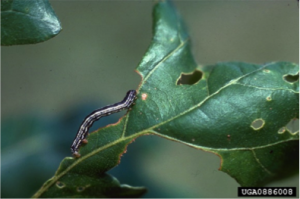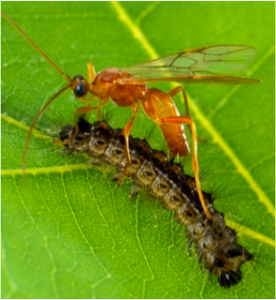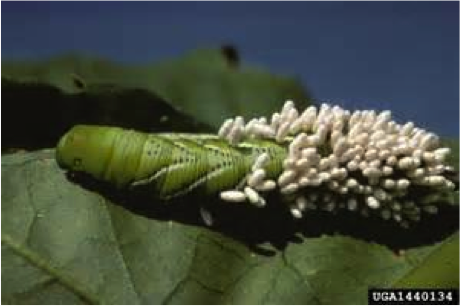Insect Feeding & Food Webs
All insects must eat or they will eventually starve so much of insect behavior is about finding food and eating it! Many insects are very specific in their feeding preferences and they will either starve or move to another area if their food is not available. Other insects are not as specific and will switch to other foods if the one they are eating becomes unavailable. Insects can be classified as herbivores, carnivores or detritivores.
Herbivorous insects eat plants. The plants can include large, vascular plants that we see on land, and the small, microscopic algae that are found attached to rocks in streams and ponds. The herbivores probably outnumber the insects feeding on all other things.
Herbivorous insects can feed in many different ways. For example, some chew on leaves leaving big holes. Others, like aphids, can suck the sap out of leaves, and stream-dwelling mayflies collect the periphyton that adheres to rock and sediments. In addition, some herbivores feed inside the plant tissue like stems and leaves.
Herbivorous insects often feed on plants that are important to humans, thus they can cause considerable economic losses for agriculture. For example, larvae of many moths and butterflies consume plants that are important to humans.
Carnivores eat other animals. Insects can eat a wide variety of other animals, but most eat other insects, thus are important in keeping down the populations of pest species.
Carnivorous insects come in two general types—predators and parasites. Sometimes the distinction between these two types is blurry, but in general predators are active, powerful insects that feed on smaller or weaker insects, live apart from their prey, and often actively search in different places for different meals. On the other hand, parasites live in or on the bodies of their host (prey) and live continually with them, at least in some stage of their life cycle, taking successive meals from the host. There are important predators among the beetles, flies and dragonflies and damselflies and parasites among the wasps.
Detritivores feed on dead or decaying animal and plant material, such as carrion, dung, leaf litter, and dead logs. These insects are found in many groups, but some of the most important include the cockroaches, termites, and dung beetles.


